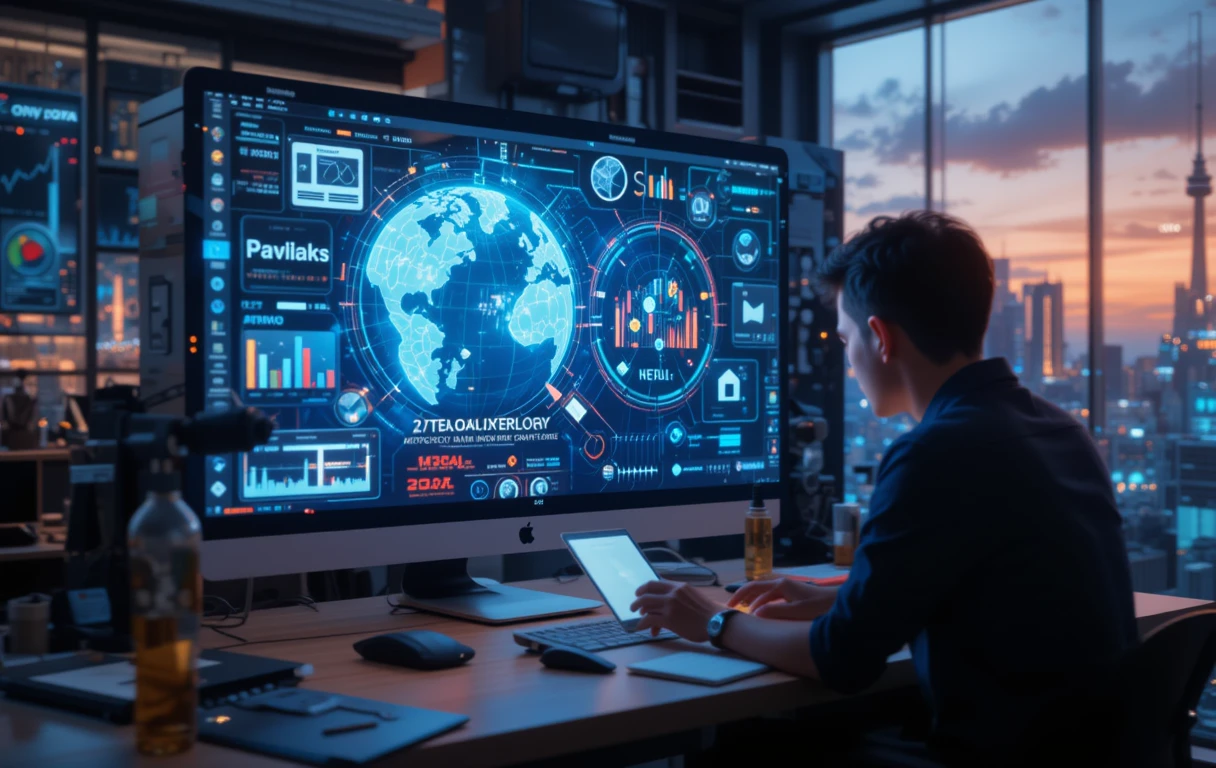The pace of technological change has never been faster, and 2025 is shaping up to be a transformative year for enterprise technology. As business leaders navigate an increasingly digital world, staying ahead of emerging trends is critical to maintaining competitiveness, fostering innovation, and meeting customer expectations.
In this article, we’ll dive into the enterprise technology trends of 2025, unpacking the opportunities they present and the challenges they bring for modern businesses.
Why Enterprise Technology Matters in 2025
Enterprise technology underpins virtually every aspect of modern business, from automating operations to enabling better customer engagement. In 2025, the integration of advanced technologies like artificial intelligence, blockchain, and quantum computing is set to redefine industries and reshape how businesses operate.
The benefits of adopting these trends include:
- Increased operational efficiency.
- Enhanced customer experiences.
- Improved decision-making through data-driven insights.
- Competitive differentiation in crowded markets.
The Top Enterprise Technology Trends of 2025
1. Artificial Intelligence and Machine Learning at Scale
AI is no longer a buzzword; it’s the backbone of intelligent systems driving automation and decision-making.
- AI-powered analytics: Businesses can process massive data sets in real-time for actionable insights.
- Personalized customer experiences: AI tailors services and products to individual preferences.
- Generative AI: Creating content, code, and designs efficiently with tools like ChatGPT.
2. Edge Computing Takes Center Stage
With the proliferation of IoT devices and the need for real-time data processing, edge computing is becoming essential.
- Reduced latency: Processing data closer to its source improves speed and reliability.
- Enhanced security: Sensitive data can be processed locally, reducing risks.
- Scalable solutions: Businesses can deploy edge computing across multiple locations.
3. Blockchain Beyond Cryptocurrency
Blockchain technology is revolutionizing industries beyond finance by enabling transparency, security, and decentralization.
- Supply chain management: End-to-end visibility and traceability.
- Smart contracts: Automating agreements with blockchain-based protocols.
- Data integrity: Safeguarding sensitive business information.
4. Quantum Computing Breakthroughs
Quantum computing is poised to tackle complex problems previously unsolvable by classical computers.
- Optimization in logistics and supply chains.
- Drug discovery in healthcare.
- Enhanced cybersecurity protocols.
5. Sustainable Tech Solutions
As sustainability becomes a priority, businesses are investing in technologies that reduce their environmental footprint.
- Green cloud computing: Energy-efficient data centers and operations.
- Circular economy innovations: Recycling and repurposing tech waste.
- AI-driven sustainability: Monitoring and optimizing resource usage.
6. Metaverse for Business Collaboration
The metaverse is transitioning from entertainment to enterprise applications, offering immersive ways for businesses to interact.
- Virtual collaboration spaces: Enhanced remote team interactions.
- Virtual showrooms: Engaging customers with immersive product displays.
- Training and onboarding: Gamified learning experiences
How Businesses Can Leverage These Trends
Adopt a Culture of Innovation
Encourage teams to explore emerging technologies and integrate them into existing workflows. Create an environment where experimentation is celebrated.
Invest in Skills Development
With new technologies come new skill requirements. Upskilling employees in AI, data science, and blockchain can position businesses to capitalize on tech advancements.
Collaborate with Tech Partners
Partnering with technology providers and innovators can accelerate adoption and implementation of complex solutions like quantum computing or blockchain.
Prioritize Cybersecurity
As enterprises embrace cutting-edge technology, the attack surface for cyber threats increases. Investing in robust cybersecurity measures is non-negotiable.
Industries Driving Technology Adoption
Healthcare
AI in diagnostics, wearable IoT devices, and blockchain for patient data security are revolutionizing healthcare delivery.
Retail
Personalized shopping experiences, predictive analytics, and automated supply chains are reshaping customer interactions.
Manufacturing
Smart factories, powered by IoT and AI, are optimizing production processes and reducing waste.
Financial Services
Blockchain, AI fraud detection, and digital banking platforms are making financial services more secure and efficient.
Challenges in Adopting Emerging Technologies
Despite their potential, emerging technologies come with challenges:
- High implementation costs: Advanced technologies require significant initial investment.
- Integration complexities: Legacy systems may not align with new technologies.
- Data privacy concerns: Regulations like GDPR necessitate careful handling of customer data.
To overcome these hurdles, businesses must adopt a strategic approach, focusing on scalability and compliance.
Conclusion
The enterprise technology trends of 2025 offer unparalleled opportunities for businesses to innovate, grow, and lead in their respective industries. From AI-powered solutions to sustainable practices, embracing these trends is essential for staying competitive in a rapidly evolving market.
Business leaders must prioritize adaptability and strategic investment to harness the full potential of these advancements. By doing so, they can not only future-proof their organizations but also create lasting value for their stakeholders.




